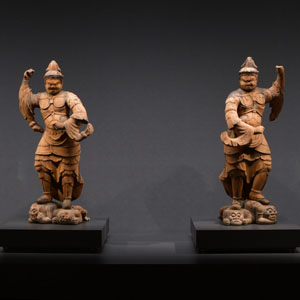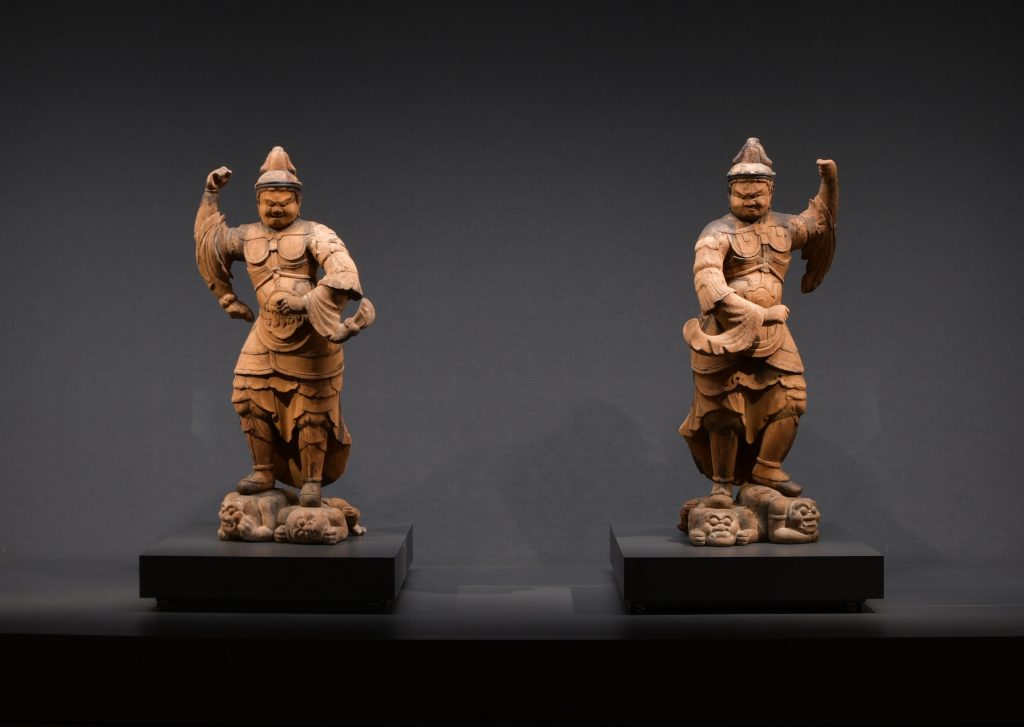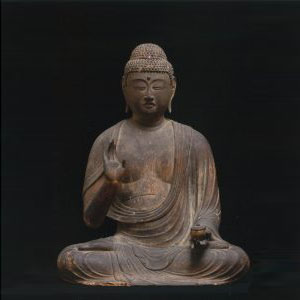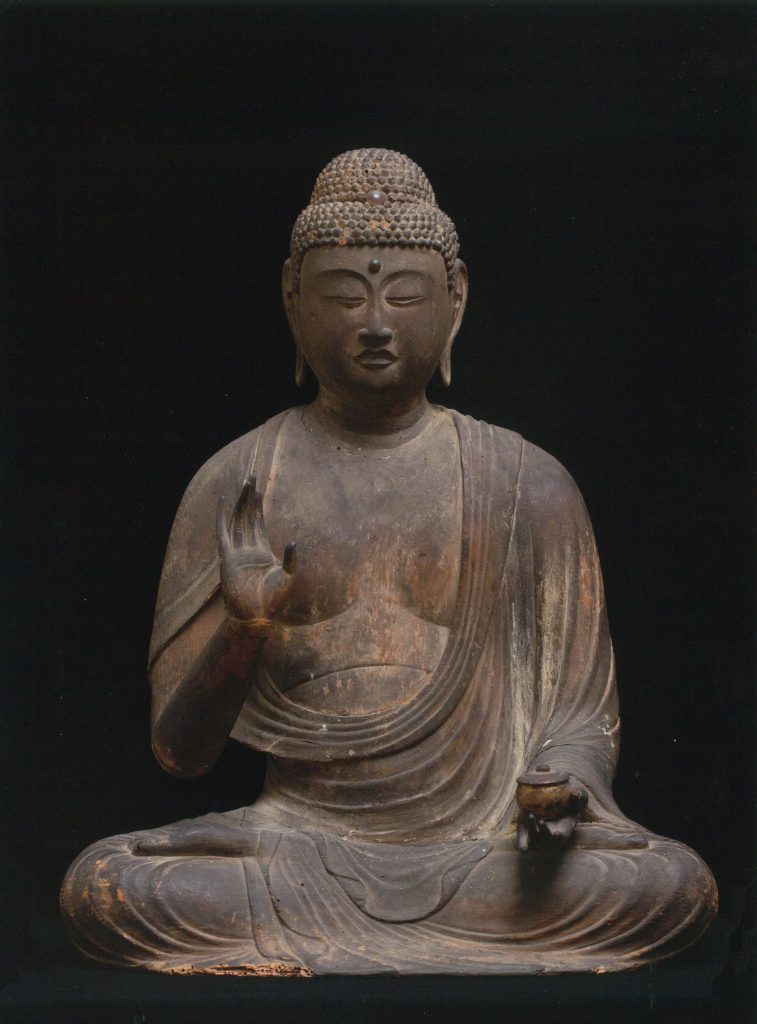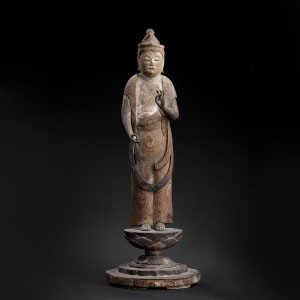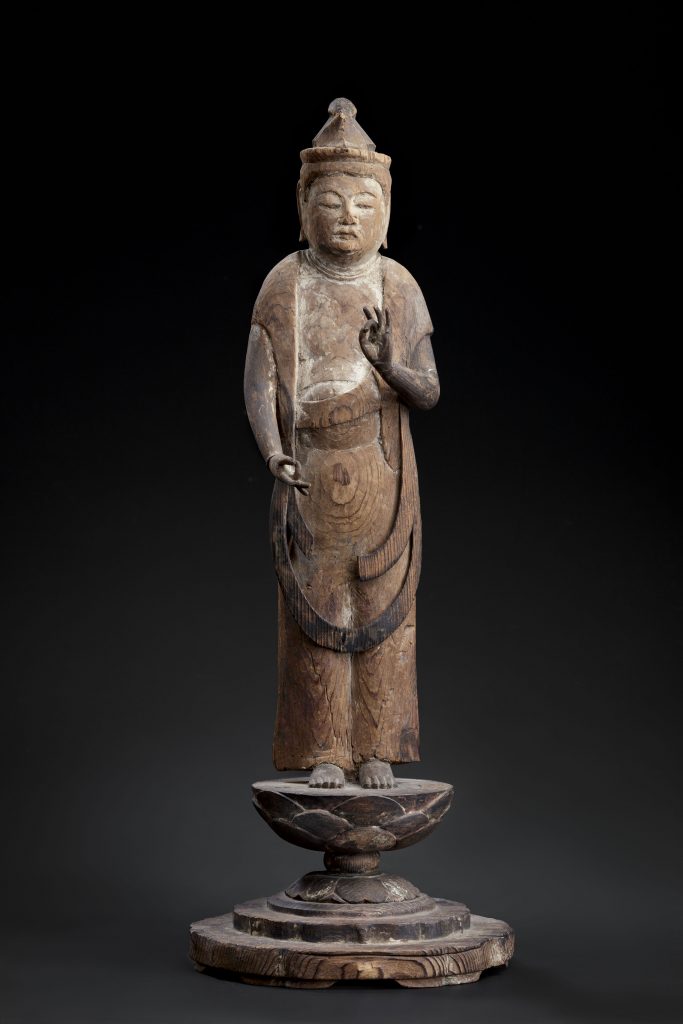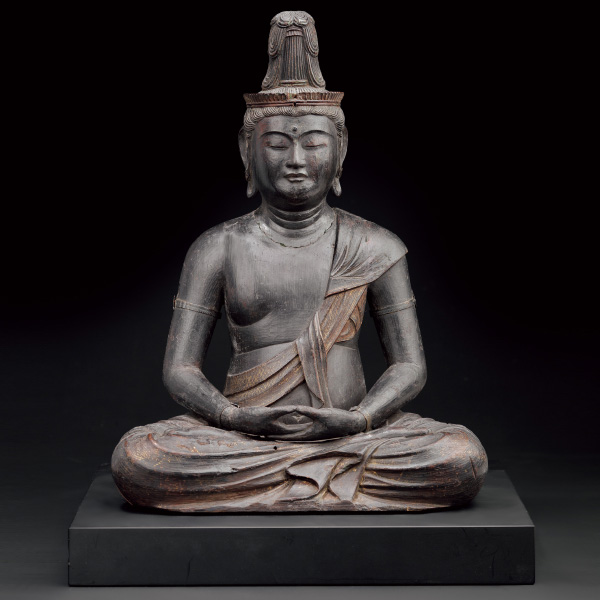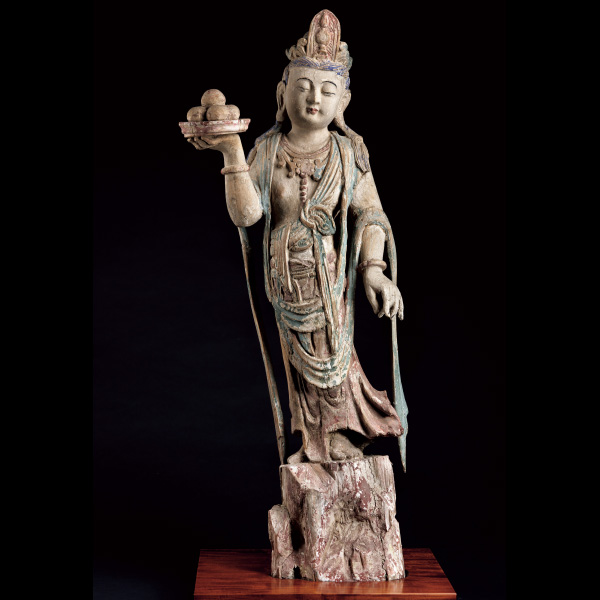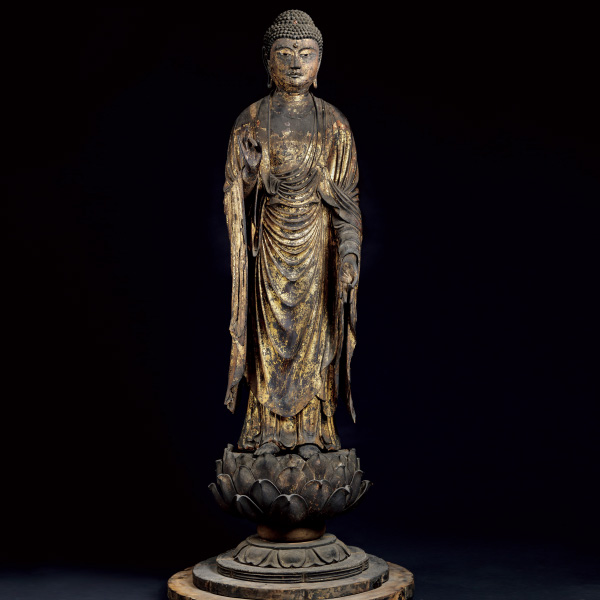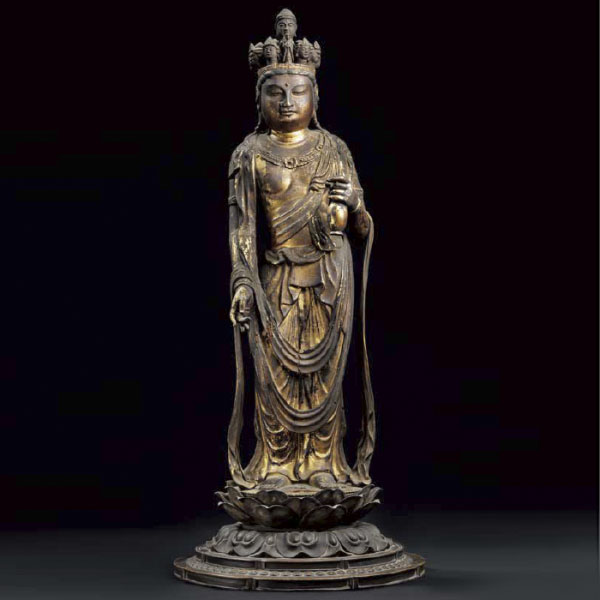
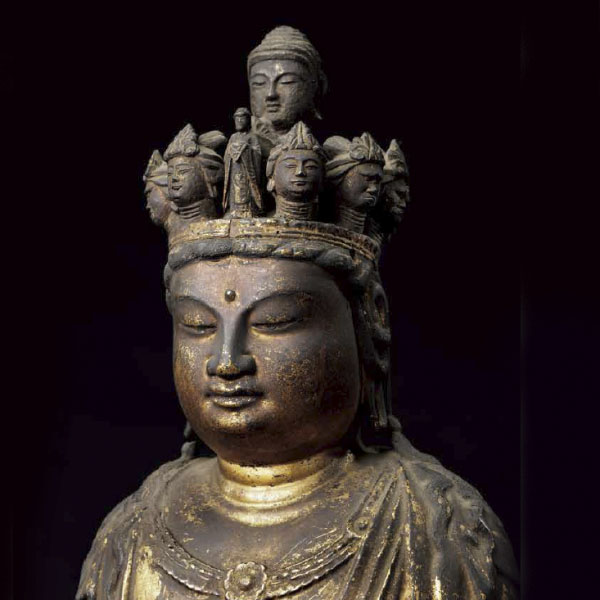
動画による作品解説
・年代:平安時代(10世紀)
・法量:像高52.2cm
・指定:重要美術品
Standing Statue of the Eleven-Faced Kannon Bodhisattva
Era: Heian period (10th century)
Dimensions: Height of the statue 52.2 cm
Designation: Important Art Object
十一面観音は十の頭上面を持つ観音で、この姿はあらゆる方角を見渡して救済を行う、観音の救済力の表現とされています。
本像は頭部から台座蓮肉の一部までをサクラと思われる広葉樹の一材から彫出した一木造の立像で、頭上面と右肩以下の右腕、左の肘から先は別に造って取り付けています。像を蓮肉まで含めて一材でつくり、内刳(内部を刳り抜くこと)を行わない技法、装身具を彫出する手法は平安時代前期に見られる特徴であり、太い鼻梁とつり上った瞳が生む強い表情、奥行のある頭部、両胸の下をC字型に刳る表現、下半身に着用した裙(巻きスカート)に見られる翻波式衣文(大きい襞の間に小さな襞をあらわす表現)も古様です。一方で本像は全体として穏やかな作風を示しており、九世紀の仏像に見られる厳しい表現が、温和な和様へと向かいつつある時期、十世紀初めの仏像と考えられます。
The Eleven-Faced Kannon is a Kannon with ten faces on its head, representing the Kannon's ability to look in all directions and offer salvation.
This statue is a standing figure carved from a single piece of broadleaf wood, likely cherry, from the head to part of the lotus pedestal. The faces on the head, the right arm below the right shoulder, and the left arm from the elbow down are separately made and attached. The technique of creating the statue, including the lotus pedestal, from a single piece of wood without hollowing out the interior, and the method of carving the ornaments, are characteristics seen in the early Heian period. The strong expression created by the thick nose bridge and upward-slanting eyes, the deep head, the C-shaped carving under the chest, and the honpa-shiki drapery (a style of depicting large folds with smaller folds in between) seen in the skirt worn on the lower body are also ancient features. On the other hand, the statue as a whole shows a gentle style, suggesting it is a Buddha statue from the early 10th century, a period when the severe expressions seen in 9th-century Buddha statues were transitioning to a more gentle Japanese style.
動画による作品解説

